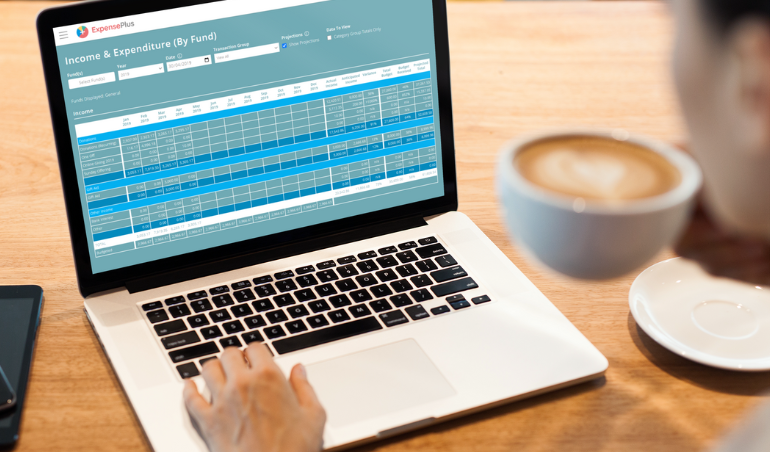As a church or charity receiving donations, you will want to make it as simple and easy as possible for donors to give financially. In this blog, we explore how to do this, and at the same time consider how you can help your church or charity reduce administration time, minimise fees, and maximise Gift Aid.
When deciding how to accept donations, you will want to consider:
Simplicity – Make it easy for donors to give in terms of the donation process and the number of options you offer. Typically having 3 to 4 ways of receiving donations is ideal.
Fees – Look for donation options that have low or no fees, which can mean asking donors to give via standing order or via bank transfer.
Gift Aid – Try to maximise Gift Aid. For example, choose an online donations platform like LoveGiving that handles Gift Aid automatically.
Administration – The donation methods you offer should be easy for you to manage. For example, an accounting package like ExpensePlus provides an automated way to submit Gift Aid claims directly to HMRC and enables you to track donors.
Different Ways to Receive Donations
It’s worth offering a few different ways for donors to give to your church or charity. This means donors can use their preferred donation method. They are therefore more likely to give regularly or make one-off donations.
1. Standing orders
Many churches and charities promote standing orders as their preferred donation method. It provides a regular income and does not incur fees. The only real downside to this method is that if the church or charity wishes to switch banking providers this can be problematic. It would require contacting all donors to ask them to set up their standing orders again.
2. Online donations
Offering to accept donations via an online platform is an easy way to administrate special offering donations e.g. Christmas appeal. It is also an easy way for visitors or those wanting to give a one-off donation to do so via your website.
The fees are generally 3% to 5%. However, if you choose a provider that automates donors being able to Gift Aid as part of the donation process flow, the additional income of 25% from Gift Aid far outweighs the fees you will pay, especially when you take into account the administrative time also saved.
Online donation platforms can also be used to accept recurring gifts. Where you have donors giving large recurring gifts, you may wish to contact the donor to ask them to consider switching to standing order so that more of the money they give goes to the church or charity rather than on fees.
For smaller recurring donations, where the fees are less, you may decide there isn’t sufficient benefit in asking donors to switch donation methods.
3. Card donations
Many churches and charities offer to accept donations via card payment as an alternative to cash. Contactless card donations of £30 or less can be claimed under the GASDS scheme so you don’t need to collect Gift Aid information from donors.
4. Cash & cheques
Most churches and charities allow donors to give via cash and cheque. However they might not promote this option as it’s more time-consuming to administrate. For churches, an offering box might be a good alternative to passing around a collection basket or bowl, particularly if the majority of donors give online or via standing order.
Choosing an Online Donations Platform
To accept online donations, there are lots of different providers to consider. Typically fees are around 3% to 5% which covers both the fee charged by the card provider and the platform fee.
If you offer an online giving platform as a donation method, you won’t miss out on receiving donations from those who might otherwise not give. For example, if someone visits your church or charity venue, they can easily go to your website to make a donation.
So how do you choose which online donations provider to use?
1. Simplicity for the donor
You want to make it easy, enabling donors to give in seconds not minutes. For the online donations platform you are considering, it’s worth finding a church that uses it already. If you go to their donations page and give a small donation you can experience how easy or difficult this is as a donor before choosing a platform.
2. Gift Aid automation
Collecting Gift Aid details should be built into the donations process and the provider should be integrated with HMRC. This means you can reclaim Gift Aid at the click of a button. Some providers don’t integrate with HMRC, leaving you with the data ‘stuck’ inside the payment processor software. You then have to manually export it to submit Gift Aid claims.
3. Accounting process flow
Another factor to consider in the donation process is getting the data from the payment processor into your accounting software to create your accounts. To avoid manually having to split payouts from your payment processor, you might want to consider an option like LoveGiving that directly integrates with the fund accounting package that you use. This is likely to save your bookkeeper lots of time.
Examples of Online Donations Platforms
Below is a list of some of the many payment processors to consider. It is typically best to offer only one platform. Having multiple options for online donations can make it confusing for donors and more time-consuming to administrate.
- LoveGiving (directly integrates with ExpensePlus)
- CAF Donate
- ChurchSuite Giving
- Give A Little
- Stewardship
Choosing a Card Reader to Receive Donations
If you want to accept card donations, there are again different types of card readers to consider:
a) Straight forward card readers
Card readers like SumUp or PayPal simply take card payments. This typically isn’t an issue where donations are £30 or less as these are eligible for GASDS as a simpler alternative to Gift Aid.
b) More sophisticated solutions
These are easier to operate by the donor without help, and they record donor details, simplifying your donation process. The fees are typically higher and there are also hardware costs.
The blog Best Contactless Card Readers for Churches and Charities explores types of card readers further.
Choosing whether to accept donations via card payments and which provider to use will depend on factors such as location, demographics, visitors, communication etc.
If you have people that visit your church or charity location who are unlikely to give via standing order or online donation, then a card reader could be for you. Another option is a tablet kiosk which displays your online donations page, thus enabling people to give online there and then.
ExpensePlus is a cloud-based fund accounting software package designed for churches and charities. ExpensePlus makes managing fund accounts simple and straightforward.








